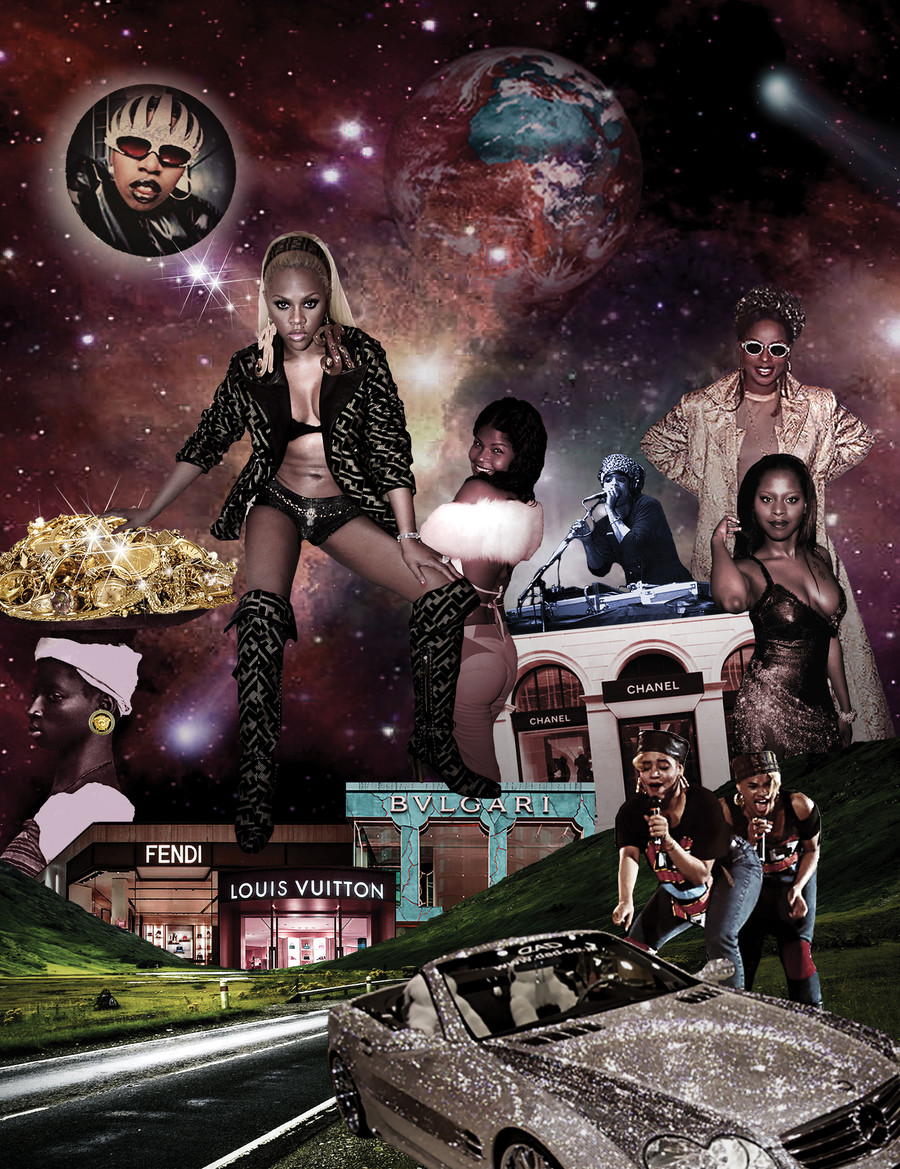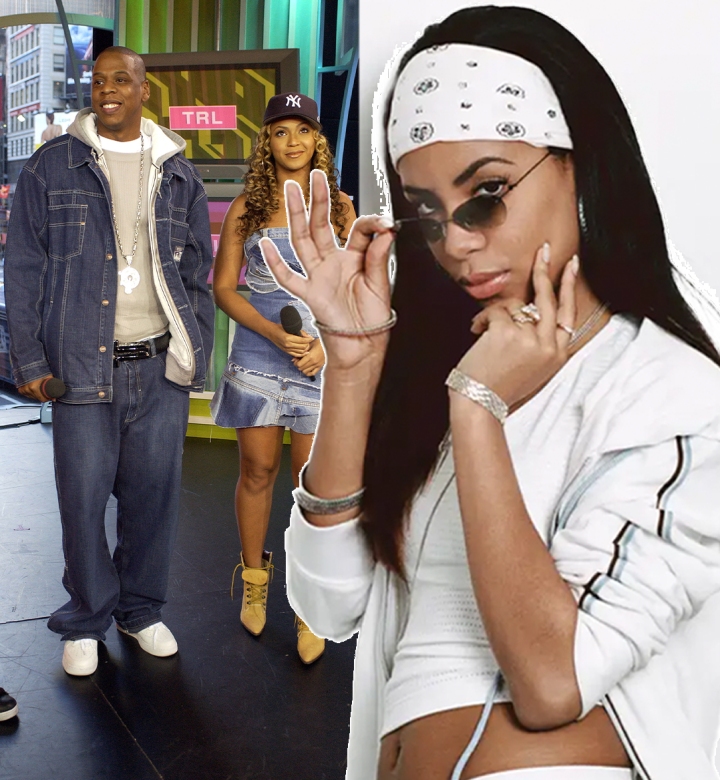2000s rap music was a popular genre that emerged in the early years of the decade, characterized by its storytelling, the use of auto-tune, and a blend of different production styles including funk, soul, and electronic. The genre marked a significant shift in the direction of hip hop and gave rise to some of the most successful and influential artists of our time.
The turn of the millennium in the early 2000s marked a new era for rap music, characterized by a shift in style and sound. The genre had, by that point, established itself as a cornerstone of popular music, with the likes of dr.
dre, tupac, and notorious b. i. g having already made their mark. However, in the early 2000s, the rise of a new generation of artists, including jay-z, eminem, and kanye west, gave rise to a new sound within the genre, one that incorporated a range of different stylistic influences and production techniques. A hallmark of this era was the use of auto-tune, a technique that allowed artists to manipulate their vocals to produce a distinctive sound. This, combined with storytelling and production styles that blended funk, soul, and electronic music, gave rise to some of the most successful and influential artists of our time. In this article, we’ll explore the evolution of rap music in the 2000s and take a closer look at some of the artists and songs that defined the era.

Credit: www.bitchmedia.org
The Evolution Of Rap Music In The 2000S
Rap music in the 2000s offered a new wave of musical artistry that revolutionized the genre. The era gave birth to some of the greatest rappers ever, with the likes of eminem and jay-z dominating the airwaves with their music.
However, the evolution of rap music in the 2000s goes beyond just the birth of new talents. Here are some of the key developments that defined the evolution of rap music in the 2000s:
The Birth Of New Sub-Genres
The 2000s saw the birth of new sub-genres that emerged from rap music:
- Crunk: This sub-genre originated in the southern states of the us and is characterized by its rambunctious and energetic nature. Artists like lil jon and the ying yang twins popularized crunk music with hits like “get low”.
- Snap: Snap music is characterized by its upbeat and danceable nature, often accompanied by the use of synthesizers and a catchy chorus. Artists like soulja boy and d4l popularized this sub-genre with songs like “crank that” and “laffy taffy”.
- Trap: Trap music originated in the southern states of the us and is characterized by its heavy use of bass, synthesizers, and drums. This sub-genre’s lyrics often deal with the harsh realities of life in struggle communities. Artists like t.i., young jeezy, and gucci mane popularized trap music in the 2000s with hits like “rubberband man,” “soul survivor,” and “icy.”
The Influence Of Global Cultural Events On Rap Music
The 2000s marked the era when global cultural events began to influence rap music on a grand scale.
- Post 9/11: The devastating terror attacks on september 11, 2001, had a significant impact on rap music in the 2000s. Artists like jay-z and eminem incorporated elements of social commentary in their music, addressing the aftermath of the attacks.
- Hurricane katrina: The catastrophic hurricane that hit new orleans in 2005 led to an outpouring of support from the rap community. Artists like kanye west and ludacris wrote songs that addressed the plight of the affected communities in louisiana.
- The rise of social media: The emergence of social media platforms like myspace and youtube in the 2000s changed the music industry forever. Rappers like soulja boy and lil b used the internet to build a fanbase and launch their careers.
The Introduction Of Technology To Rap Music Production
The 2000s marked a significant shift in rap music production, with advances in technology enabling artists to create new soundscapes and experiment with innovative methods.
- Auto-tune: The auto-tune software became a vital tool in rap music production in the 2000s, enabling artists like t-pain and kanye west to achieve a unique vocal style that became synonymous with the era.
- Sampling: The use of sampling in rap music production became prevalent in the 2000s, with producers like just blaze and timbaland using samples to create unique beats for some of the biggest rappers of the era.
- Digital audio workstations (daws): The rise of daws like fl studio and ableton live made it possible for aspiring producers to create high-quality rap music from the comfort of their homes, democratizing the industry.
The evolution of rap music in the 2000s was characterized by the birth of new sub-genres, the influence of global cultural events, and the introduction of technology to rap music production. These developments helped to redefine the genre and solidify its place in mainstream music culture.
Breaking Down The Beats Of The Golden Era
The early 2000s were a golden era for rap music, with iconic artists shaping the sound through their hard-hitting beats and clever wordplay. In this segment, we will dive into one of the most essential elements of rap music: the beats.
Breaking down the beats of the golden era will demonstrate the intricacies and genius behind the music.
Analysis Of The Most Popular Beats Of The Era
The beats of the early 2000s were complex, yet catchy, allowing hip hop artists to create unique sounds and make their mark in the industry. The following are some key analysis points of the most popular beats of the era:
- Most beats featured a strong bassline and a distinctive drum pattern that listeners could easily vibe to.
- Certain beats utilized samples from classic r&b or soul songs that added depth and emotion to the music.
- Other beats were more straightforward but utilized simple yet catchy melodies that would get stuck in the listener’s head.
- The rap industry shifted away from traditional boom-bap beats and moved towards a more simplistic sound with minimal instrumentation.
The Use Of Samples And Their Importance In The Era’S Beats
Samples played a significant role in shaping the sound of early 2000s rap music. Many producers utilized samples of classic songs to create a nostalgic and familiar sound that listeners could connect with. Here’s what you need to know about the use of samples and their role in creating the era’s beats:
- Producers would typically sample songs from the 70s and 80s, giving new life to classic melodies.
- Samples were used in various ways, from a simple loop to a complete reimagining of the original song.
- The use of samples allowed for a unique and customized sound to be created for each rap song.
- However, the legality of using samples can be a tricky issue, and some producers have been embroiled in lawsuits over the unauthorized use of samples.
The Role Of Instruments In Rap Music During The Era
Instruments played an important part in the production of early 2000s rap music. Producers aimed to create unique soundscapes and utilized a variety of instruments in their beats. Here’s what you need to know about the role of instruments in rap music during the era:
- The use of live instruments was common, with guitar riffs or saxophone solos added to the beat to create a unique sound.
- Synthesizers were also used in many beats, creating futuristic and electronic sounds.
- Samples of live instruments were also sometimes used, giving a realistic and detailed sound to the production.
- The use of instruments often demonstrated the producer’s creativity and helped distinguish their unique sound from others in the industry.
Overall, the beats of the early 2000s were diverse and distinctive. From the use of classic samples to the incorporation of live instruments, the era’s beats demonstrates the importance of creativity and innovation in the rap industry.
Lyricism And Narrative In 2000S Rap Music
The Storytelling Techniques Of Artists In The Era
The 2000s saw an emergence of new talent in the rap industry, and many artists began to experiment with their storytelling techniques in unique ways. Some of the techniques they used include:
- Multiple perspectives: Many artists like jay-z and eminem used multiple perspectives in their music. This technique allowed them to tell stories from different points of view and offer varying perspectives on the same situation.
- Flashbacks: Flashbacks were a prevalent technique used in 2000s rap music, allowing the storyteller to take listeners back in time and provide context to certain situations and events.
- Symbolism: Symbolism added another layer of depth to the lyrics. Artists like kanye west incorporated religious themes and symbolism into their music to convey deeper messages.
- Non-linear narratives: Many rappers used non-linear narratives, such as kendrick lamar’s “swimming pools (drank)”, which tells a story backward.
How Lyrics Captured The Zeitgeist Of The Era
The lyrics in 2000s rap music often reflected the cultural and political climate of the time, capturing the zeitgeist of the era. Here are some key ways in which rap music reflected the zeitgeist of the era:
- Social issues: Many artists focused on issues such as police brutality, drug addiction, and poverty, bringing attention to societal problems that were not being addressed in mainstream media.
- Political commentary: Artists like lupe fiasco and common used their music to comment on political events, such as the iraq war and hurricane katrina aftermath.
- Embracing individuality: The 2000s saw a rise in artists who embraced their individuality, such as outkast and missy elliott. They encouraged listeners to do the same and promoted self-confidence, self-expression, and self-love.
The Blend Of Social Commentary And Entertainment
2000s rap music was notorious for its ability to balance social commentary and entertainment. Here is how artists managed to blend the two:
- Using humor: Many artists, such as ludacris and lil wayne, used humor to lighten up some of the serious subject matter and make it more palatable for the listener.
- Catchy hooks: Catchy hooks were used to offset more serious verses, making the music both entertaining and thought-provoking.
- Creative wordplay: Artists used creative wordplay to make their messages more intricate and interesting, without losing sight of their social commentary.
2000s rap music brought a new level of lyricism, storytelling, and social commentary to the rap industry. The era’s unique blend of social commentary and entertainment made for some of the most memorable music in the genre’s history.
The Rise Of Rap Collaborations
The Collaborations That Defined The Era
Collaborations were a prominent part of the 2000s rap scene, with many artists teaming up to create tracks that would go on to become classics. Here are some of the most impactful collaborations of the era:
- “crazy in love” by beyoncé ft. jay-z: An iconic song that introduced beyoncé’s solo career and showcased jay-z’s smooth and confident flow.
- “numb/encore” by jay-z and linkin park: A stunning blend of rap and rock that resulted in a grammy-winning hit.
- “forgot about dre” by dr dre ft. eminem: A track that proved to be the perfect vehicle for eminem’s rapid-fire delivery and elevated both artists’ careers.
- “where is the love?” By the black eyed peas ft. justin timberlake: A socially conscious song that became a massive hit and helped to cement the black eyed peas’ status as a top-tier rap group.
- “money maker” by ludacris ft. pharrell williams: A catchy song that showcases ludacris’s distinctive voice and pharrell’s slick production skills.
The Impact Of Collaborations On The Songs And Artists Involved
Collaborations allowed artists to tap into each other’s strengths and create tracks that were unique and memorable. Here are some of the ways that collaborations impacted the era:
- Exposed artists to new audiences: Collaborations between different rap artists, as well as those from different genres, allowed for an exchange of fans, opening up new audiences for artists.
- Created timeless tracks: Many collaborations, like “numb/encore,” became classics that would be remembered and celebrated for years to come.
- Boosted career trajectories: Collaborating with other successful artists could help lesser-known artists gain recognition and become more popular.
Why The Era Saw An Increase In Collaborations
There were many factors that contributed to the rise of collaborations in the 2000s. Here are a few possible explanations:
- The rise of the mixtape culture: Mixtapes became incredibly popular in the 2000s, as they allowed artists to showcase their skills while also featuring collaborations with other rappers.
- The need for crossover appeal: Collaborations with artists from different genres allowed rappers to appeal to a wider audience, increasing their commercial success.
- The success of iconic collaborations: As rap collaborations like “numb/encore” gained massive popularity, it inspired other artists to try their hand at creating tracks with other rappers.
The Legacy Of 2000S Rap Music: Revisiting The Golden Era
The 2000s were a remarkable decade for rap music, marked by the revolutionary change influenced by the genre’s best and brightest stars. As time passes, it becomes evident that the era left a lasting legacy that has continued to influence the genre’s course and approach.
Let’s take a closer look at the impact of the era and what the future holds for rap music, with a focus on these points:
The Continuing Impact Of The Era On Contemporary Rap Music
The 2000s, commonly known as the ‘golden era of rap music’, changed the course of hip-hop music, and its impact continues to shape the genre. Here are some ways the era has left its mark on contemporary rap music:
- The era saw the rise of some of the most critically acclaimed and commercially successful artists, such as jay-z, lil wayne, 50 cent, kanye west, and eminem, to name a few.
- The beats, rhythms, and flows pioneered during the 2000s continue to impact contemporary rap music, with some younger artists adopting a similar style to that of the era’s most prominent names.
- The lyrical content from the 2000s era remains relevant and significant and continues to influence current artists, with themes such as social issues, politics, love, and loss remaining crucial pillars of rap music.
The Effects Of The Era On Popular Culture And Society
The 2000s rap music scene was not only influential in music but also had profound impacts on popular culture and society beyond the genre. Here are a few examples:
- Hip-hop fashion, popularized by prominent rap stars of the 2000s, continues to influence clothing trends, with clothing brands emulating the unique style pioneered during the era.
- The 2000s’ rap music had a direct impact on popular culture, with many of the era’s biggest songs becoming a part of the cultural zeitgeist regularly referenced in mainstream media.
- The era’s music tackled social and political issues relevant at the time, which opened up and contributed to increasing awareness and conversation around taboo topics in society.
The Future Of Rap Music And How The Era Set The Foundation For Its Development
The 2000s was a period of critical transition for rap music, and the groundwork was laid to bring the genre to the mainstream. Here are some ways the era set the foundation for the future of rap music:
- The 2000s saw hip-hop music gain worldwide recognition, with many of its prominent artists achieving global success. This contributed to the mainstream recognition and normalization of rap music, paving the way for further development and exploration of the genre.
- With the success of rap music, from a niche genre to mainstream, it became a launching pad for the careers of several music industry professionals, including executives, producers, and managers, to name a few.
- The 2000s era marked a significant shift in the sound and influence of rap music, opening doors for younger artists to create and experiment with new styles and sounds within the genre. The era’s influence on contemporary rap music is clear in newer artists who have taken elements from the era and incorporated them into their music.
The 2000s era of rap music may have passed, but its influence on contemporary rap music and popular culture remains as strong as ever. Its impact has created a rich legacy of innovative music and has set the foundation for rap music’s continuing development.
It remains a remarkable period that will always be remembered as the ‘golden era’ of hip-hop music.
Frequently Asked Questions For 2000S Rap Music
What Were The Most Popular 2000S Rap Songs?
In the 2000s, rap music was dominated by chart-toppers such as eminem’s “lose yourself,” outkast’s “hey ya!,” and 50 cent’s “in da club. ” Other popular songs included kanye west’s “gold digger,” lil wayne’s “lollipop,” and t. i. ‘s “live your life.
“
Who Were Some Of The Most Influential Rappers Of The 2000S?
The 2000s saw the rise of many influential rappers, including eminem, jay-z, kanye west, lil wayne, t. i. , and 50 cent. These artists helped to shape the sound of rap music in the 2000s and continue to influence the genre to this day.
How Did The 2000S Shape The Sound Of Rap Music Today?
The 2000s were a time of great experimentation in rap music, with artists like outkast, kanye west, and lil wayne pushing the boundaries of what was possible in the genre. The era also saw the rise of auto-tune and the popularity of trap beats, both of which continue to be important components of rap music today.
What Were Some Of The Controversies In 2000S Rap Music?
The 2000s were a controversial era in rap music, with many artists facing criticism for their use of violent and misogynistic lyrics. Notable controversies included the beef between 50 cent and ja rule, the fallout from kanye west’s “george bush doesn’t care about black people” comment, and the backlash against lil wayne’s lyrics about women.
Conclusion
The 2000s was a decade that was heavily influenced by rap music, which transformed the music industry in many ways. It expanded the breadth of music and offered a platform for artists to express their political and social views, leading to greater awareness and acceptance of important global issues.
With its unique style, catchy beats, and social relevance, rap music gained an enormous following, and brought diverse communities together. Furthermore, technological innovations in the music industry allowed the music to be widely accessible, making it more popular than ever before.
While the decade may have ended long ago, the impact of rap music in the 2000s continues to inspire new generations of performers and listeners. As we move further into the future, it is worth remembering the 2000s as a decade where rap music ushered in a new era of music and cultural expression.













